How Virtual Reality Could Make Science Labs Accessible Anywhere
Virtual reality is reshaping how students and educators approach science labs. Gone are the days when a lack of resources or physical space limits hands-on learning.
With a VR science lab, students can now experiment, analyze, and discover—all from virtually anywhere. This innovation is bridging gaps in science education and aligning perfectly with today’s need for more accessible solutions.
This article will discuss how:
- VR makes science labs accessible, no matter the resources or space available.
- Students can experiment and learn from anywhere with a VR headset.
- Hands-on learning is more flexible and practical through virtual environments.
- This tech removes barriers and brings more students into science.
- It’s a smart way to improve access to quality science education.
By using VR technology, science labs are becoming more inclusive and interactive. Students who may have otherwise been excluded from hands-on learning due to physical limitations or lack of resources can now participate fully in lab experiments.
Understanding VR Science Labs
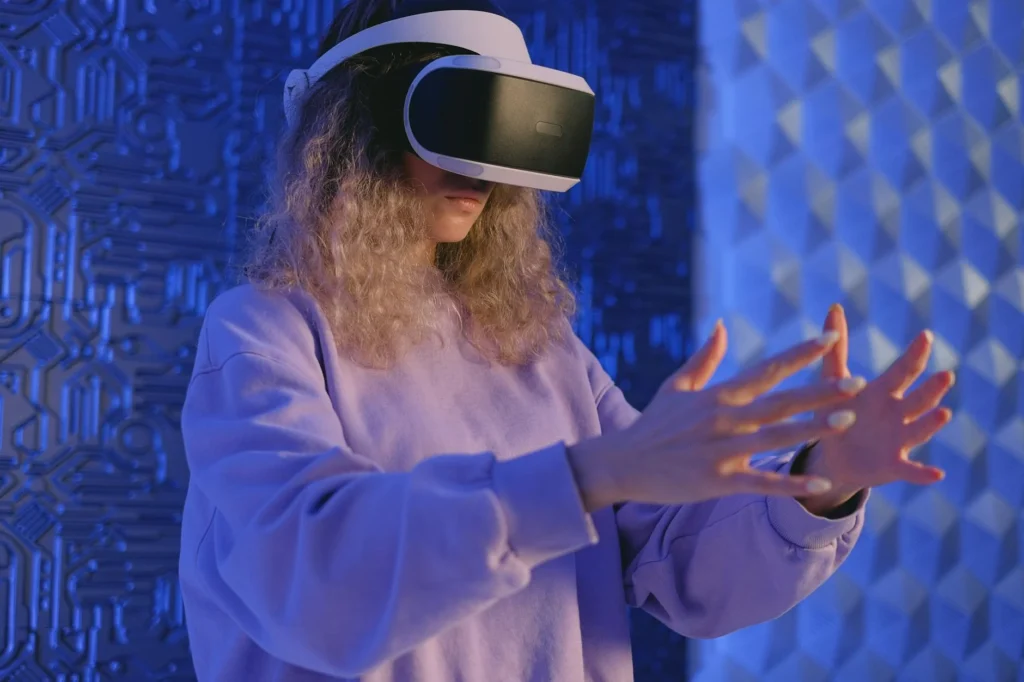
Virtual reality (VR) technology has made modern science education more adaptable and accessible than ever before. In a VR science lab, students have the chance to conduct experiments, manipulate elements, and visualize complex concepts—even without physical equipment or a traditional lab setting. But how does it all work? Let’s break it down.
What is a VR Science Lab?
A VR science lab takes the essence of hands-on science education and digitizes it into an immersive virtual environment. Instead of relying on physical tools and materials, students use VR headsets to step into a simulated lab where they can interact with virtual objects and perform experiments in real-time.
Key features of a VR science lab include:
- VR Headsets: These devices, like the Oculus Quest or HTC Vive, enable users to access 360-degree environments that replicate real-world labs.
- Software Simulations: Programs designed with specificity allow users to mix chemicals, study anatomy, or understand physics without the dangers or constraints of the physical world.
- Collaborative Tools: Some VR science labs even offer multiplayer settings, where students and teachers can work together in one virtual space, discussing findings or troubleshooting experiments.
This flexibility can transform learning experiences for schools in remote areas or institutions with limited budgets for lab equipment.
Core Technologies Behind VR Science Labs
The backbone of any VR science lab lies in its ability to seamlessly combine hardware, software, and graphical simulation. These core technologies work in harmony to create an engaging experience:
- VR Hardware
- High-resolution VR headsets like Meta Quest or Sony PlayStation VR provide immersive visuals.
- Hand controllers allow users to “grab” and “manipulate” items within the virtual space.
- Motion tracking ensures precise movements, making experiments accurate and life-like.
- Advanced VR Platforms
- Purpose-built education platforms, such as Labster or OpenSim, create easy-to-use interfaces for learning.
- These platforms often come with pre-designed activities to suit science curricula, minimizing preparation time for educators.
Simulation ToolsBehind each program is robust graphical technology that simulates everything from chemical reactions to the structure of DNA. This programming uses physics engines and rendering software to bring the lab to life in stunning detail.
These technologies not only make science more interactive but also improve engagement and retention among students. They bring exciting opportunities for corporate training managers or school administrators investing in tools tailored to the educational needs of this generation. Read more about EdTech innovations and their benefits in this guide.
VR science labs aren’t just a dream for the future—they are here to stay, offering tools that can close educational gaps worldwide.
Benefits of VR Science Labs
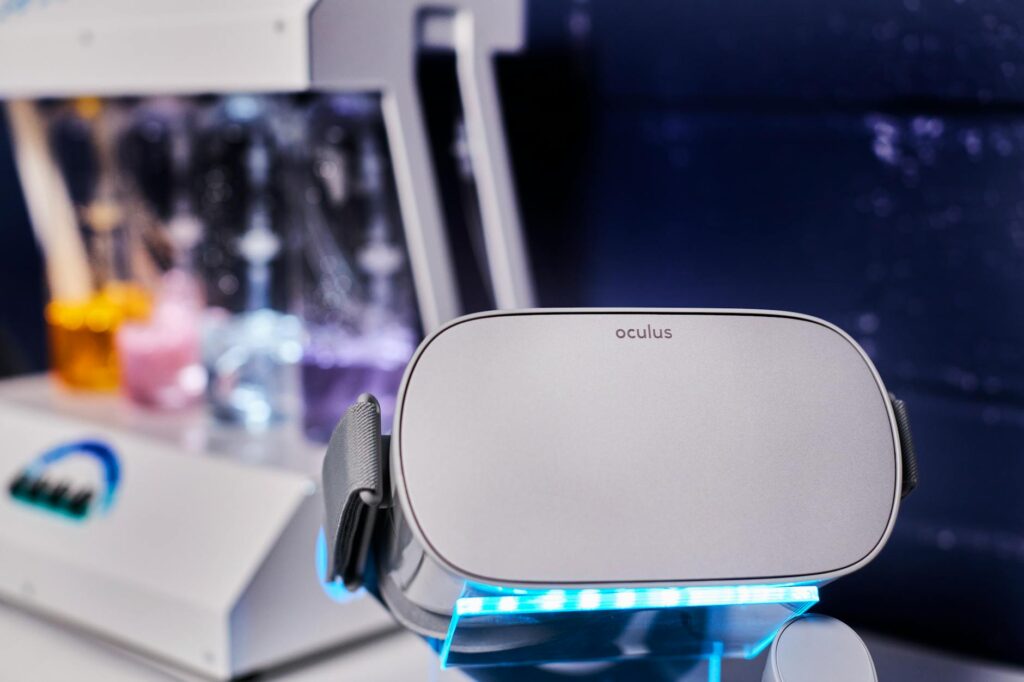
Virtual reality (VR) science labs are breaking down traditional barriers in education, offering solutions that are practical, safe, and engaging for both students and educators. These virtual spaces open up a world of opportunity to learn science in innovative ways, regardless of location or budget constraints.
Increased Accessibility to Education
One of the standout benefits of a VR science lab is how it levels the playing field for students everywhere. Imagine students in remote or underserved communities gaining access to the same advanced science education as those in well-funded schools.
By removing geographical restrictions, VR allows learners to explore complex experiments, chemistry reactions, or molecular structures from anywhere in the world. All they need is a VR setup—no need for a physical lab.
This innovation ensures that education becomes more inclusive, granting everyone an equal shot at exploring science regardless of location.
Safe and Controlled Learning Environment
Handling dangerous chemicals or conducting a high-stakes physics experiment in real life comes with risks—and costs. But VR offers a solution. Through virtual simulations, students can engage with experiments that would otherwise be considered unsafe, enabling them to learn without fear of accidents or errors. The results? A hands-on learning experience in a completely risk-free environment.
Additionally, this controlled setting eliminates the wear and tear on expensive lab equipment, providing a long-lasting way to educate future scientists.
Boosting Engagement and Retention
Let’s face it, traditional learning methods can sometimes feel dry or repetitive. VR science labs flip the script by immersing students in dynamic, interactive environments. When learners can step “inside” a cell or watch live simulations of a volcano erupting, they’re not just learning—they’re experiencing science.
Research also shows that immersive experiences can significantly enhance comprehension and memory retention. With VR, students grasp complex concepts more easily and stay motivated to dig deeper into their studies.
Cost-Effectiveness for Institutions
Running a traditional laboratory can be financially draining for schools. The costs of chemicals, lab equipment, and regular maintenance add up over time. Here’s where VR science labs become a game-changer. Schools can save a significant amount by adopting VR technology, which eliminates the recurring expenses associated with consumables and equipment upkeep.
More importantly, scalability becomes easier. Whether a school has 10 students or 1,000, the same VR platform can accommodate them, making it a sustainable solution for educational institutions with tight budgets.
Challenges and Limitations of VR Science Labs
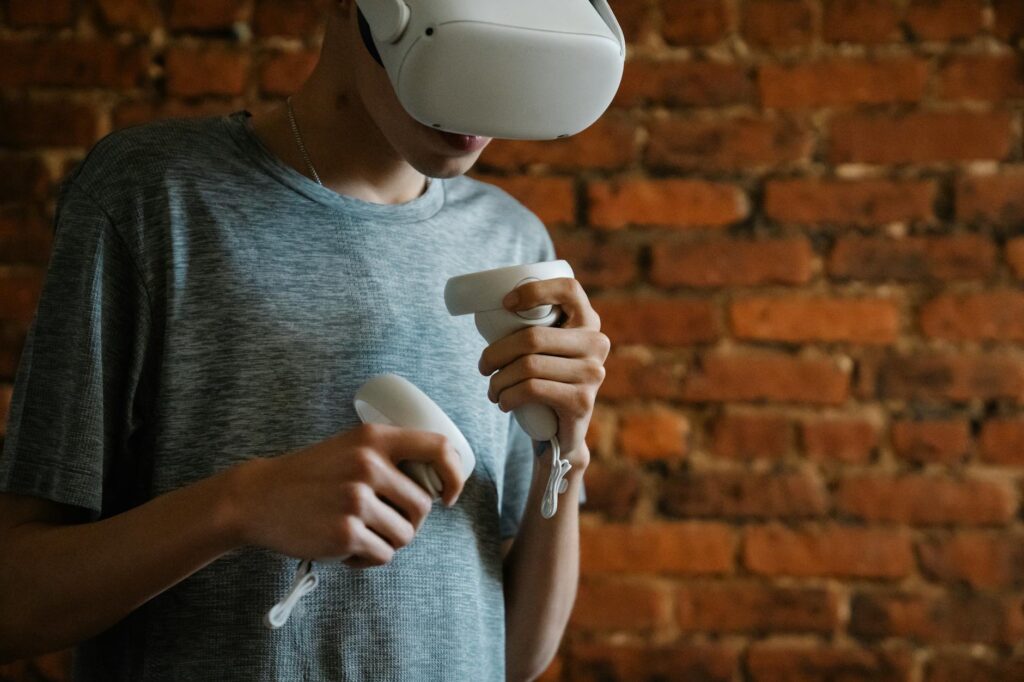
While VR science labs offer exciting possibilities for education, they come with their own set of challenges and limitations that schools and institutions must navigate. Understanding these concerns is crucial for those considering implementing VR in science education.
Cost and Accessibility of VR Equipment
The upfront cost of adopting VR technology can be a significant hurdle for many institutions. VR headsets, hand controllers, and high-performing computers to run sophisticated simulations all come with a hefty price tag. For smaller schools or those in underfunded regions, this can make VR science labs feel out of reach.
Moreover, the cost doesn’t stop at hardware. Institutions may also face recurring expenses for software updates, licensing, and maintenance to ensure the system continues functioning properly. If the goal is to make science education inclusive and accessible to everyone, these financial barriers must be addressed carefully.
A related challenge is that not every student has access to these technologies at home. If a school cannot consistently provide VR equipment to all students, the potential for unequal learning experiences increases.
Technical Challenges and Required Expertise
Running a VR science lab isn’t as simple as plugging in a device and pressing play. These systems can require ongoing software updates, troubleshooting, and maintenance to work effectively. For institutions with limited IT support, this could become a bottleneck that disrupts the learning process.
Additionally, creating a fully functional VR science lab requires trained personnel who understand both the technology and how to integrate it into educational frameworks. Imagine presenting students with a VR setup during a crucial lesson, only for the system to lag or crash due to insufficient technical support. These scenarios underscore the importance of having experts on hand.
Even smaller details, like ensuring compatibility between devices or running simulations smoothly without glitches, can make or break the success of VR science labs.
Limitations in Simulations
One area where VR inevitably falls short is in replicating the tactile and sensory aspects of real-life experiments. While VR science labs offer visually convincing environments and enable students to learn through interaction, they can’t fully replicate the feel of mixing chemicals, observing differences in reactions firsthand, or the texture of handling real lab equipment.
This limitation can be crucial when teaching skills that hinge on actual physical manipulation or sensory cues. For example, medical students practicing surgery need to understand how it feels to hold a scalpel and cut with precision—something that VR simulations, at least at this point, struggle to emulate fully.
For now, VR works best as a supplement to physical labs rather than a full replacement. Used wisely, it can provide a framework for understanding concepts and conducting safe experiments, but some skills still call for hands-on experience in the real world.
These challenges don’t negate the value of VR science labs but remind us that thoughtful planning and resource allocation are essential for success.
Applications of VR Science Labs in Education and Research
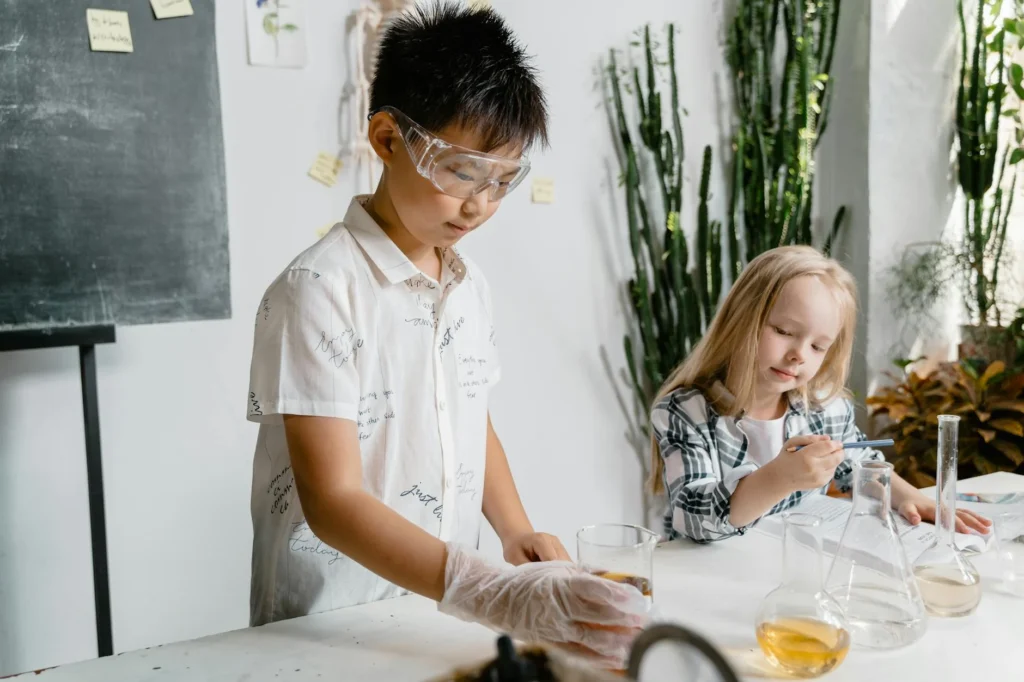
VR science labs have fundamentally changed, redefined, and extended the possibilities within education and research. By creating rich, immersive simulations, VR fosters a more engaging and accessible way to explore topics that range from basic principles to complex scientific phenomena. Let’s take a closer look at how VR applications span across diverse educational and professional landscapes.
K-12 Education
In elementary and high schools, VR science labs have become a pivotal tool to enrich science curriculums. By engaging students with hands-on virtual experiments, even challenging science topics are made approachable and fun. Imagine students learning about how cells divide by literally stepping into a model of a cell, or exploring physics concepts like gravity and acceleration using interactive simulations.
- Interactive Lessons: Students can participate in guided experiments where they modify variables and observe the results without danger or material waste.
- Equal Opportunities: Schools without physical lab setups can still provide experiential learning by integrating VR science labs.
- Boosting Curiosity: For many young learners, the interactive and gamified nature of VR makes science less intimidating and boosts their interest in STEM topics.
By incorporating VR into curriculums, K-12 educators are raising the bar for early science education, transforming it into an experience students look forward to.
Higher Education and Research
In higher education, VR science labs address more intricate and specialized learning needs. For college students and researchers, VR tools provide advanced capabilities such as 3D molecular modeling, simulations for surgery practice, and even virtual dissections—pioneering activities that would be resource-intensive or restricted in traditional labs.
- Virtual Dissections: Biology students can dissect organisms virtually without ethical concerns, offering the same educational value as real dissections.
- Molecular Visualization: Chemistry and biochemistry students can manipulate life-sized 3D molecular structures to observe interactions and reactions.
- Physics and Engineering: Simulating fluid dynamics or testing structural components in VR allows early exploration and discovery without reliance on physical prototypes.
Universities and research institutions are now using VR science labs to bridge practical limitations, offering students and faculty safe and cost-efficient ways to push the boundaries of knowledge.
Corporate Training Programs
Beyond academia, VR science labs are making waves in corporate training. Companies in industries like pharmaceuticals, healthcare, engineering, and technical manufacturing are adopting these tools to train employees effectively and efficiently.
- Hazard-Free Learning: Employees can experiment or learn safety protocols in VR, where mistakes are safe and can even be encouraged to enhance learning.
- Technical Skill Development: Simulations teach workers to operate advanced machinery or execute complex processes without the risks or downtime of using actual equipment.
- Data-Driven Feedback: VR platforms collect interaction data to identify areas where trainees excel or need improvement, offering a personalized training experience.
This practical, hands-on approach ensures employees are better prepared while reducing costs and risks for the organization. For example, pharmaceutical technicians can learn to handle sensitive materials without jeopardizing production timelines.
Final Thoughts
Virtual reality is transforming science education by making hands-on learning accessible from anywhere. With its ability to break location barriers, reduce costs, and offer safe, dynamic learning environments, a VR science lab is a solution that schools and organizations can’t ignore.
- Identify key areas where VR can address specific needs or challenges.
- Train staff to use VR tools effectively and confidently.
- Set clear goals to measure the impact of VR on projects or workflows.
- Test the technology on a small scale before expanding its use.
- Gather feedback regularly to improve and adapt VR implementation.
As we embrace these advancements, it’s essential to weigh their benefits and limitations. By doing so, decision-makers can implement VR technology meaningfully, ensuring a balanced approach to its adoption.
Author
-

The PathBuilder team is a dynamic group of dedicated professionals passionate about transforming education through adaptive learning technology. With expertise spanning curriculum design, AI-driven personalization, and platform development, the team works tirelessly to create unique learning pathways tailored to every student’s needs. Their commitment to educational innovation and student success drives PathBuilder’s mission to redefine how people learn and grow in a rapidly changing world.
View all posts







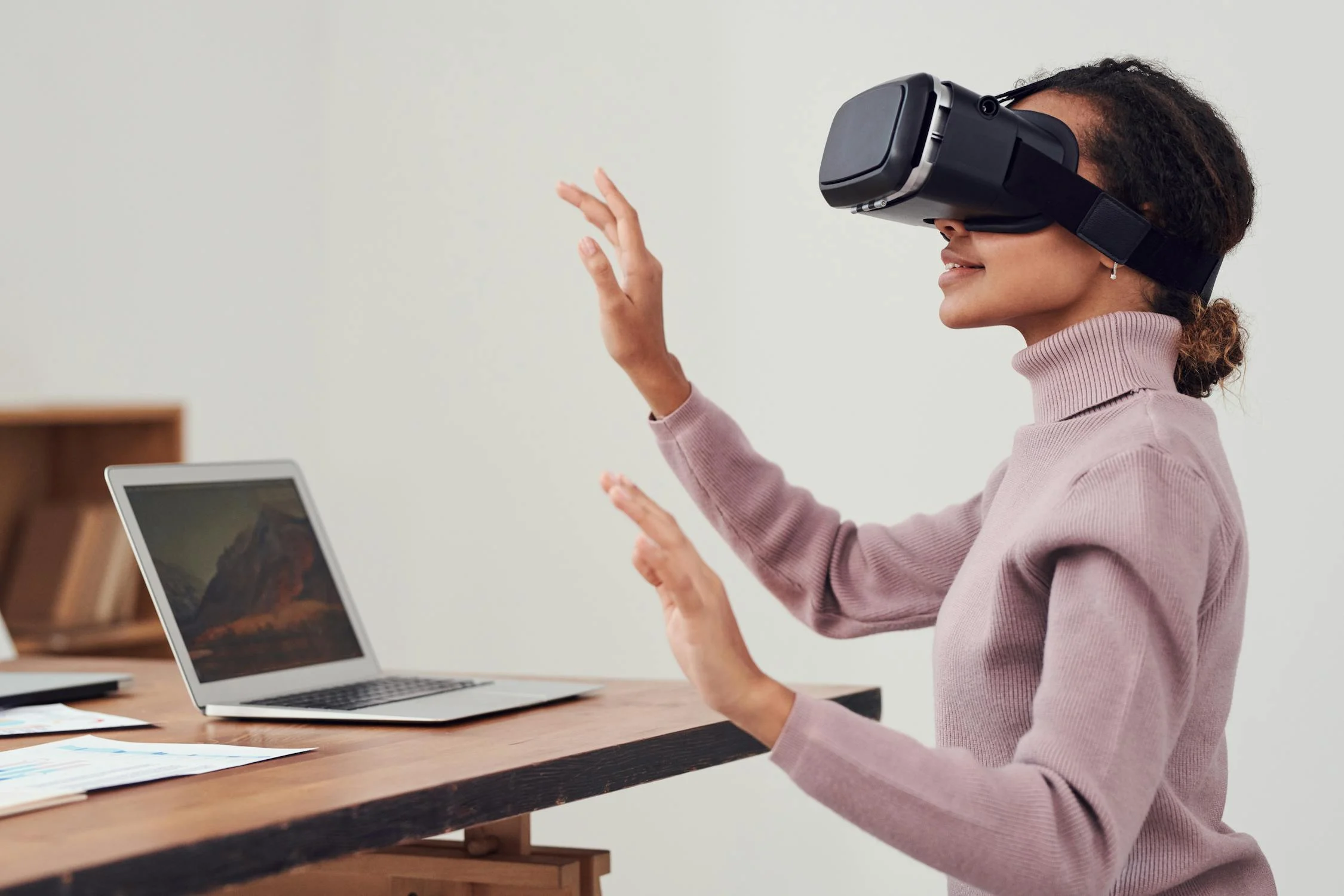









The PathBuilder team is a dynamic group of dedicated professionals passionate about transforming education through adaptive learning technology. With expertise spanning curriculum design, AI-driven personalization, and platform development, the team works tirelessly to create unique learning pathways tailored to every student’s needs. Their commitment to educational innovation and student success drives PathBuilder’s mission to redefine how people learn and grow in a rapidly changing world.